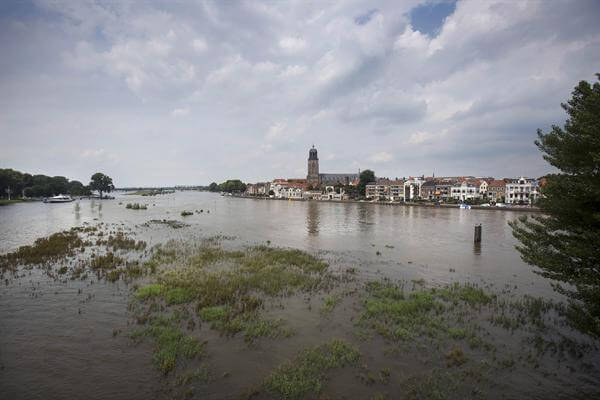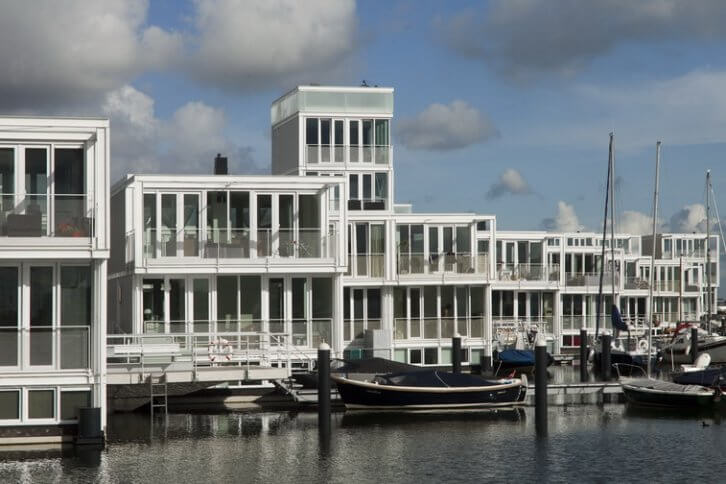Why houseboats can help saving the planet
We are now confronted to several problems regarding real estate. Some cities like London are facing a housing crisis because there is not enough living space. Architects have to take sea level rise into consideration, as well as other consequences of climate change. To put it in a nutshell: we have less and less land to accommodate an ever-growing population. The solution is found in living on the water, from single houseboats to floating communities
By Margaux Tailpied / BookaHouseboat
Over the last few years, housing policies have quite changed. Before, when it came to water, we used to do everything to hold it out by building dams and barriers. But it is more likely that in the future, we will have to learn how to live with water. That means living ON water. After all, 70% of the surface of Earth is water-covered.
Lean to live with water
More importantly: the climate change will force us to live with water – whether we like it or not. Simply canalizing water ways to get rid of rain and melting water will no longer do. We need to store the water in larger water bodies to avoid floods. The Netherlands are currently showing how to deal with this with their National project ‘Room for the rivier’.

The Netherlands have learned how to deal with water instead of fighting it. (Photo: Rijkswaterstaat , Ruimte voor de Rivier / Werry Crone)
Houseboats below sea level
So the Netherlandsdid not wait until climate change to think about it. With 40% of its land mass below sea level, you may say they did not have a choice but investing in water-resistant housing. The Dutch learned to embrace the water instead of fighting it.
You can tell by having a look at the many houseboats on Amsterdam’s canals. The city has a district, IJburg, that is to have entire floating neighborhoods. This is a solution to the housing shortage in Amsterdam. Marlies Rohmer Architects and Urbanists are designing modern homes moored around jetties – here you can see 75 houseboats of the future, both social and more expensive private owned properties.

These floating homes in Amsterdam/IJburg, designed Marlies Rohmer Architects and Urbanists, show the future of living on the water. (Photo: Marlies Rohmer Architects and Urbanists)
Floating homes beat floods
To avoid incidents due to floods, experts are now focusing on creating mechanisms which allow the floating homes to rise and fall with the tides. Incidents like tsunamis, hurricanes or heavy rain falls will occur more frequently because of global warming so experts need to make sure that floating accommodations are safe.
Koen Olthuis, a Dutch architect who is specialized in creating floating homes, estimates that “if your land is threatened by water, the safest place to be is on water.”
Olthuis also explains that building houses on water provides more possibilities for sustainability. Living on the water offers great natural and sustainable resources. The smaller carbon footprint, the better: sea wind can be used for cooling, energy can be created via solar panels and even tidal power.
So, if you want to make a gesture to protect our planet, you may consider living on a houseboat, or just rent a houseboat to experience the freedom of floating!
In case you're interested in more information about houseboats in general, check out this houseboat site.
